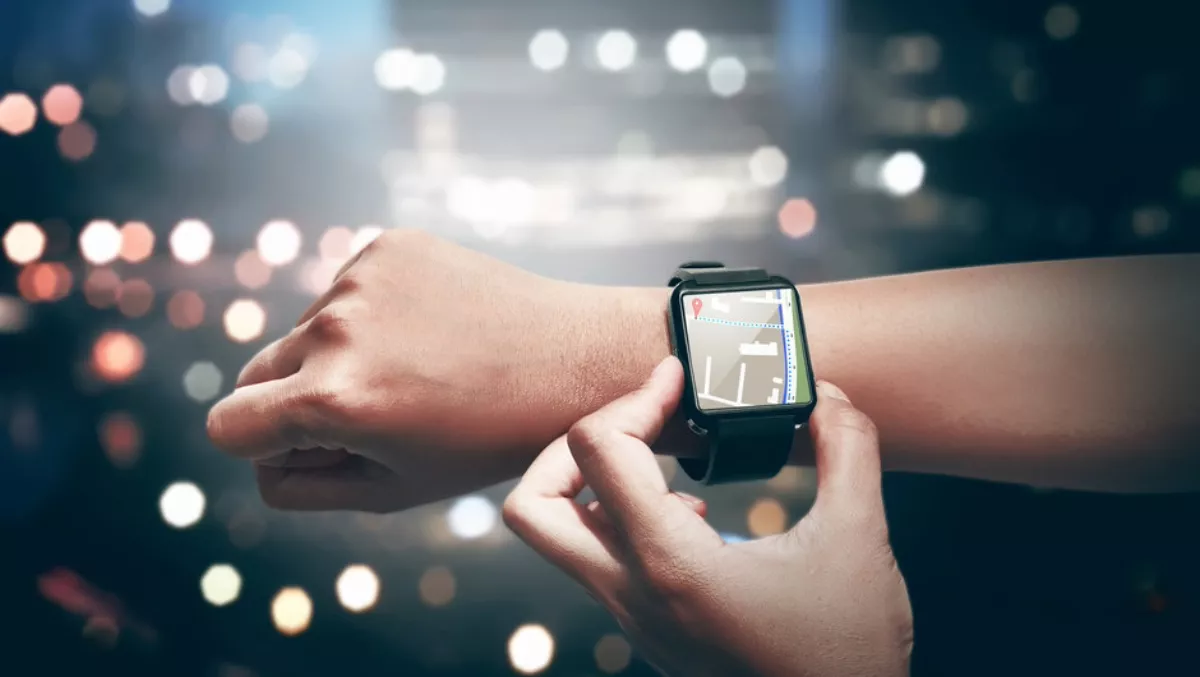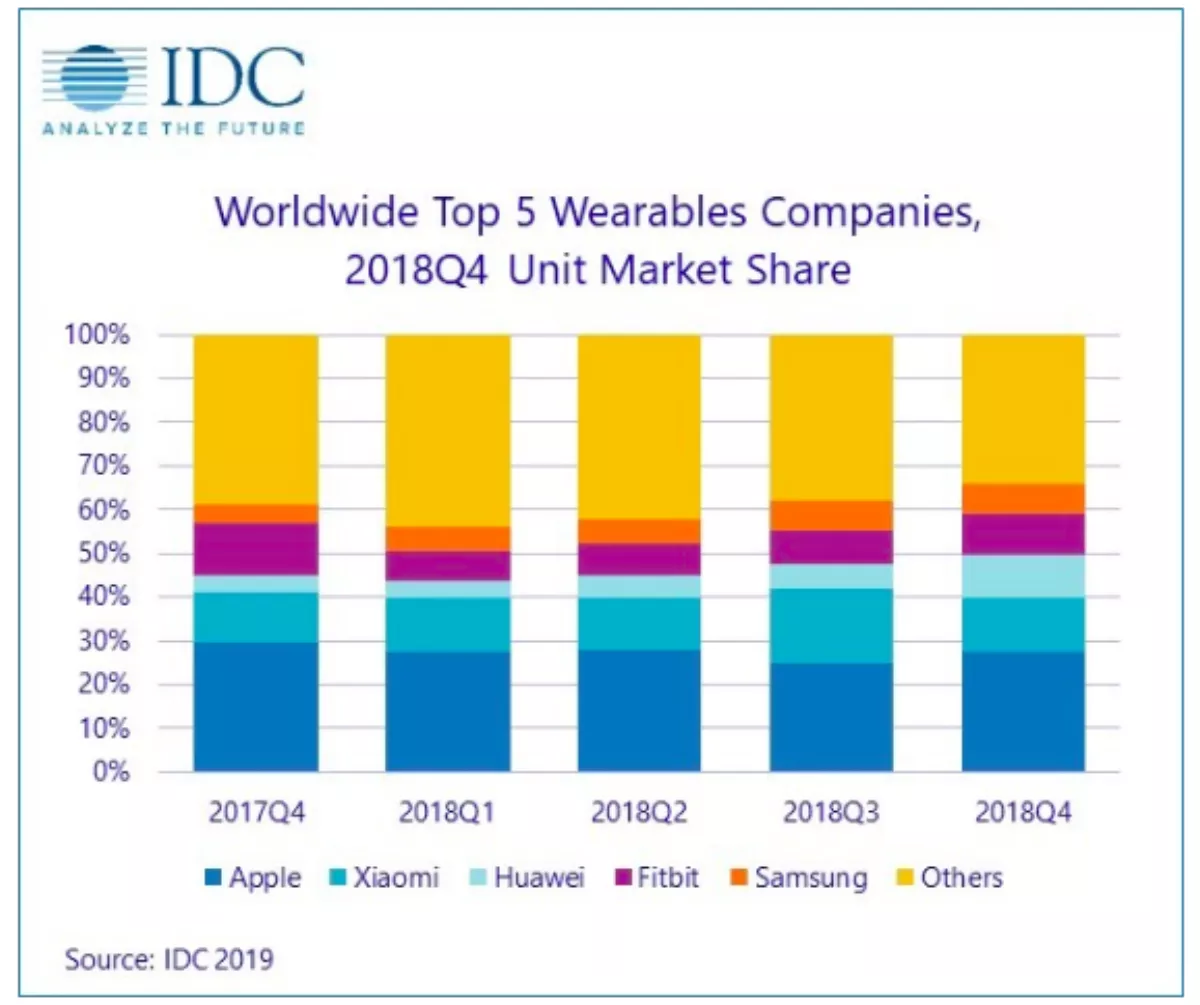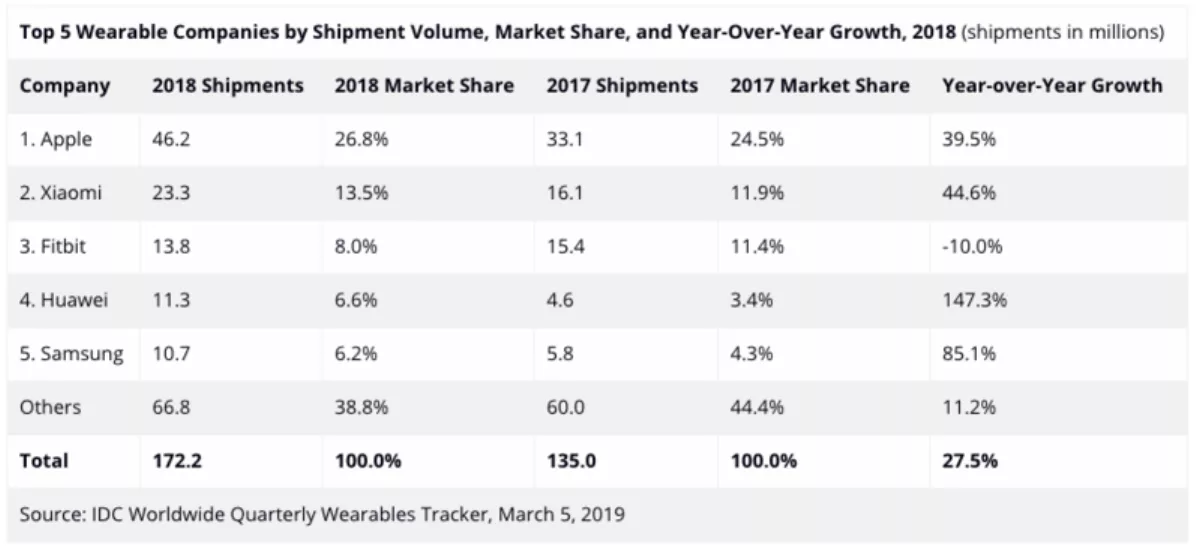
Apple, Xiaomi, and Huawei dominate surging wearables market
Wearable devices are certainly catching on as the market has experienced substantial growth since its inception.
According to the latest data from IDC, the global market for wearable devices grew 31.4 percent during the fourth quarter of 2018 (4Q18), reaching a new high of 59.3 million units.
This growth was fueled by new wearables launching during the months leading up to the holiday season as well as new smartphone launches as many were bundled with wearables from leading brands.
Shipments for the entire year of 2018 grew by 27.5 percent with 172.2 million wearables shipped. Much of this growth was attributed to the growing number of ear-worn devices as they captured almost a quarter of the market during the year.
In keeping up with current trends, IDC has recently revised its taxonomy for ear-worn devices to now include wireless headphones capable of enabling smart assistants at the touch of a button or through hot-word detection. Examples of such headphones include Apple's AirPods, Google's Pixel Buds, Bose's QC35II, and more.

When compared to 12 months earlier, the market for smartwatches surged 55.2 percent and accounted for 34.3 percent of the overall market during the quarter. Meanwhile, wrist bands accounted for 30 percent of the market as recent launches from Xiaomi, Huawei, and Fitbit continued to drive the category forward.
However, ear-worn devices topped the bunch after skyrocketing 66.4 percent and claiming 21.9 percent of the market.
"The market for ear-worn wearables has grown substantially this past year and we expect this to continue in the years to come," says IDC Mobile Device Trackers senior research analyst Jitesh Ubrani.
"It is the next battleground for companies as these types of headphones become a necessity for many given the exclusion of headphone jacks from modern devices. Add to that the rise of smart assistants and in-ear biometrics and companies have the perfect formula to sell consumers on a device that's complimentary to the device ecosystem that lives on their wrist and in their pocket."

IDC Wearables research director Ramon T. Llamas says the future is bright for smartwatches too.
"Apple accounted for nearly half the market and followed by a long list of companies that posted double- and triple-digit growth. What resulted from this was a growing list of devices available at multiple price-points to meet the needs of a diverse market," says Llamas.
In terms of the vendor highlights, Apple topped the pile with 16.2 million devices shipped over the quarter - 10.4 million of which were Apple Watches. The Series 4 has been off to a very strong start and IDC anticipates this to continue as more healthcare organisations and consumers adopt the latest device. The remainder of Apple's shipments were comprised of AirPods and Beats headphones in the ear-worn category.
Xiaomi captured the second position amongst the top 5 with 12.6 percent share. The company's products remain strong in its home country of China. However, recent investments in Europe and other Asian countries have paid off and helped cement Xiaomi's name as a competitive force. Xiaomi's Mi Band 3 alone accounted for over 30 percent of all wrist bands shipped during the quarter.
Huawei had a great quarter in the wearables and smartphone markets. Within smartphones, the company grew 43 percent during the quarter in an otherwise declining market and this translated to a staggering 248.5 percent growth in the wearables market since many of the Huawei and Honor phones were bundled with wearables. New product launches such as the Watch GT, FreeBuds 2 Pro, and a few others also helped the company gain traction.

Fitbit finally returned to growth during the holiday season as the new Charge 3, combined with promotional activity on other popular devices such as the Versa, helped the company to claw back some of its market share. The company's outlook remains strong as investments in the healthcare segment continue to pay off. In the US, Fitbit has managed to partner with providers such as Blue Cross Blue Shield, UnitedHealthcare, and others, allowing for further proliferation of its devices and services.
Rounding out the top five was Samsung with 4 million units shipped during the quarter. Similar to Huawei and Xiaomi, Samsung was also able to bundle many of its wearables with smartphones. The newly launched Galaxy Watch was quite well received although older models such as the Gear S3 still managed to capture a notable share of Samsung's overall shipments.

